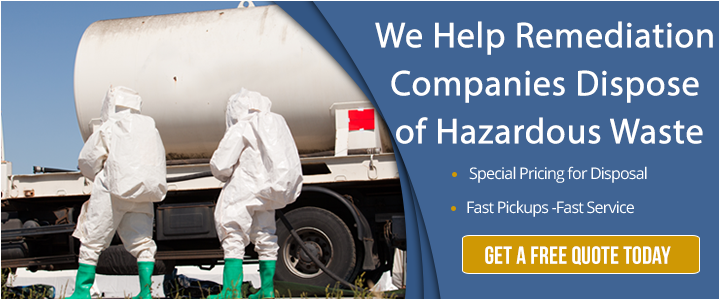Overlooking critical elements within your environmental remediation plan could mean the difference between success and setbacks.
What is an environmental remediation plan?
When a site is contaminated, an environmental remediation plan is a comprehensive document outlining the strategies, procedures and steps that will be taken in the cleanup and restoration of the site. This plan serves as a roadmap for addressing environmental issues caused by pollutants or hazardous substances, ensuring that the remediation process is conducted effectively, safely and in compliance with regulatory standards.
Several stakeholders, from environmental engineers to geologists, hydrogeologists, chemists, regulatory experts, property owners, and other human health and safety professionals, work together to draft an environmental remediation plan. Even public interest groups or local community representatives may be part of the planning process to ensure transparency.

Once a plan is drafted, it often goes through several reviews and revisions. This is the time to ensure that nothing is missing from your environmental remediation plan BEFORE any remediation activities begin.
Let’s look at what you may be overlooking that could keep your environmental remediation plan from being comprehensive and compliant.
Proper Waste Disposal
Proper waste disposal is a pivotal aspect of any comprehensive environmental remediation plan. Yet it can be overlooked since waste disposal is typically implemented once remediation is finished.
However, to ensure that the environmental remediation process is comprehensive and compliant, it’s critical to include disposal and transportation as part of your plan. That’s because during the cleanup and restoration process, various groundwater contaminants, hazardous materials and byproducts are often extracted or treated, generating waste that demands careful handling and disposal.
There are additional reasons why hazard waste disposal should be included in your environmental remediation plan as well, including:
-
Identification and Categorization of Waste: It is crucial to categorize the waste generated during remediation activities. This includes delineating between hazardous and non-hazardous waste, and understanding the specific properties of each waste stream. The best hazardous waste disposal companies will identify the waste generated, which can be important if you aren’t familiar with every type of waste that may be discovered during the remediation process.
-
Compliance with Waste Disposal Regulations: Adhering to waste disposal regulations at local, state and federal levels is paramount. Different types of waste often have specific disposal requirements outlined by environmental agencies. Failure to comply can lead to legal repercussions and environmental hazards.
-
Selection of Proper Disposal Methods: Choosing appropriate disposal methods is vital for ensuring the safe and responsible elimination of waste. This could involve treatment, recycling, incineration, secure landfill disposal or other specialized methods depending on the nature of the contaminants.
-
Consideration of Environmental Impact: Careful consideration must be given to the potential environmental impact of waste disposal methods. For instance, certain disposal techniques may result in air, soil or water pollution if not executed properly, exacerbating environmental concerns.
-
Budgeting and Resource Allocation: Waste disposal often constitutes a significant portion of your remediation project’s budget. Allocating adequate resources and funds for proper waste management and disposal is essential to avoid delays or compromises in the remediation process.
-
Documentation and Reporting: Thorough documentation of waste disposal activities, including manifests, tracking records and proper reporting to regulatory authorities, is essential for accountability and compliance.
-
Continued Monitoring and Oversight: Continuous monitoring of waste disposal activities throughout the remediation process ensures that the chosen methods remain effective, minimizing any potential adverse impacts on the environment.
Addressing waste disposal comprehensively within the environmental remediation plan guarantees that the cleanup process not only tackles contamination but also mitigates the risk of further environmental harm due to improper waste management practices.
A Communication Strategy
It can be easy for remediation companies to hyperfocus on a remediation site, but your plan should go beyond the boundaries of a physical piece of property. Your plan should also include a well-thought-out community engagement and communication strategy.
Engaging with the local community and stakeholders fosters transparency. It demonstrates a commitment to open communication, which builds trust and credibility between the remediation team and those affected by or interested in the cleanup activities.
A lack of communication can also lead to misconceptions or fears within the community about the nature of the remediation project, its potential impacts or the safety measures in place. An effective communication strategy helps address concerns, clarifies misconceptions and provides accurate information to alleviate fears.
Ensure you engage stakeholders and allow them to participate in decision-making or provide valuable insights. This creates a platform for input where community concerns, historical knowledge of the area or suggestions for improvement can be shared and considered.
Some environmental regulations also require public involvement or disclosure of information regarding remediation projects, so it’s important to include a communication strategy to remain in compliance with these legal requirements when warranted.
A Contingency Plan
Always expect the unexpected. A contingency plan does just that.
With any project, failure to include contingency plans or strategies that account for unforeseen challenges or changes during the remediation process, can significantly impede the efficiency and success of the remediation services.
After all, environmental remediation projects often encounter unexpected developments. These might include discovering previously unknown contaminants, variations in contaminant distribution or changes in the site’s geological or hydrological conditions. Without a contingency plan, these unforeseen circumstances can disrupt the remediation process, leading to delays or incomplete cleanup.
Contingency plans also serve as proactive measures to mitigate risks. They provide a framework for responding swiftly and effectively to unforeseen events, reducing the potential impact of unexpected challenges on the project’s timeline and objectives.
While remediation plans are based on the best available information during the planning phase, new data and insights may emerge. Contingency plans allow for the incorporation of new information and adaptive strategies to address evolving conditions.
Historical Site Analysis
A historical site analysis can help prevent these “unforeseen circumstances” from emerging.
Overlooking historical information about the site’s past uses and activities could lead to underestimating or overlooking potential areas of contamination, hindering the effectiveness of the remediation efforts.
Including a historical site assessment or analysis in your environmental remediation plan offers several benefits:
- Identification of potential contamination sources
- Preservation of historical context that might hold cultural or historical significance
- Meeting of legal and regulatory requirements
- Insight into past contamination and the remediation strategies used
- A better understanding of past mistakes or practices that led to contamination, allowing you to implement preventive measures to avoid future contamination issues
Conducting a thorough historical site analysis and integrating its findings into the environmental remediation plan is crucial. It enables a more comprehensive understanding of potential contamination sources, aids in selecting appropriate remediation strategies, and ensures compliance with regulatory standards, ultimately leading to more effective and successful remediation outcomes.
Regulatory Updates
Environmental regulations are continually evolving. You can face legal issues if your environmental remediation plan is based on outdated regulations.
These changes could include alterations in permissible contaminant levels, disposal methods, reporting protocols or permitting criteria. This can occur not only at the state and federal levels but at local levels as well.
While inadequate monitoring of regulatory updates may lead to unintentional non-compliance, you’re still responsible for implementing the appropriate remediation strategies. Failing to do this can result in penalties, fines or legal actions from regulatory agencies. Non-compliance not only impacts the progress of the remediation project but can also tarnish the reputation of the responsible parties.
While it can be challenging to stay on top of regulatory changes, engaging with a reputable disposal company can help with dedicating focus on environmental compliance. The best disposal companies are well-versed in current environmental laws.
They also specialize and have the resources to track, interpret and implement changes in several facets of your plan, from disposal methods to waste handling protocols, documentation and more. Partnering with a disposal company committed to compliance is one important way to ensure you stay on top of legal and regulatory updates.


Comment